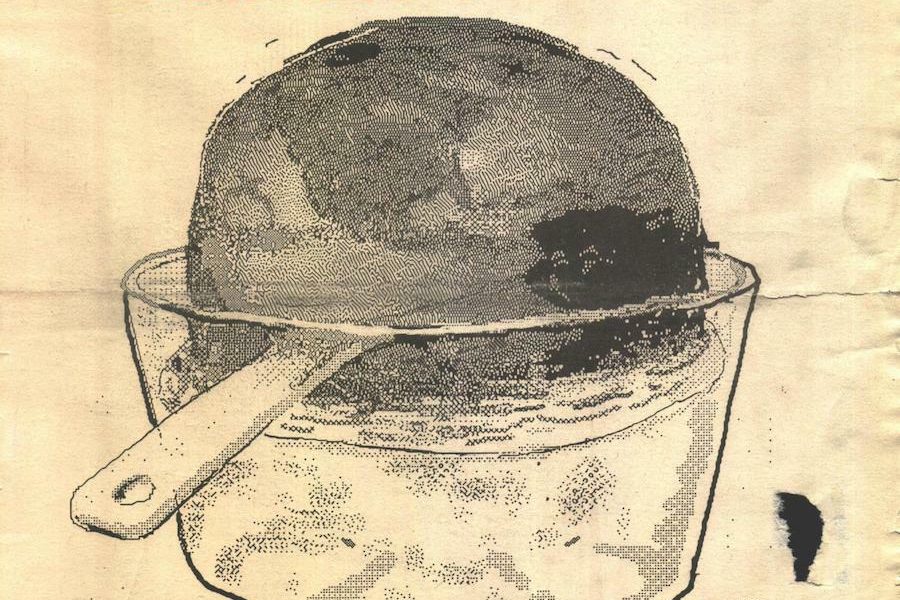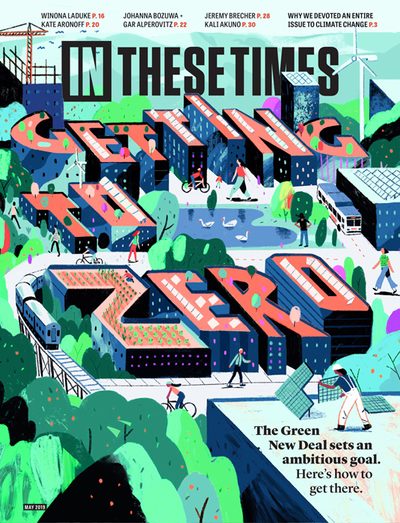Thirty Years Ago, In These Times Predicted Our Climate Future
A 1989 article sketched out a worst-case vision of the future. Things got even worse than we thought.
In These Times Editors

In the winter of 1989, In These Times ran a three-part series on global warming by environmental journalist Dick Russell. The first, “Endless Simmer,” summarized the science, making clear that we’ve known most of what we needed to know to confront climate change for 30 years. The second, “Reagan’s Legacy of Hot Air,” criticizes the Reagan administration for kicking the can down the road; one wonders whether Russell could have imagined that in 2019, we’d have a president who denies the can’s existence entirely.
The third piece, “Earth Needs You,” points the way toward solutions. It begins with two visions of the faraway future, the year 2010:
SCENARIO ONE: DATELINE 2010. AMERICAN CITIES, LARGELY absent of smog, are now lined with trees of numerous varieties. Homes and offices use one-quarter the amount of energy that they consumed only 21 years before, yet an efficiency-conscious economy has helped achieve even greater prosperity. Electric vehicles, powered primarily by the sun, cruise the streets, while the remaining gasoline-fed automobiles now get at least 50 and as many as 120 miles per gallon. Centers for the recycling of paper, aluminum, plastic and other products provide jobs for thousands of people. A network of small but productive farms operating without petrochemical pesticides or fertilizers dot the rural landscape. Public schools, churches and other organizations busily promote additional tree-planting efforts. Abroad, an “Ecology Corps,” modeled after the Peace Corps of the ’60s, assists in helping developing nations implement similar programs.
Scenario two: Dateline 2010. The output of carbon dioxide (CO2) entering the atmosphere from the burning of coal, oil and natural gas has risen another 38 percent in only 21 years. Millions of lush acres of tropical rain forest that once provided the womb for countless lifeforms and stabilized the Earth’s atmosphere by absorbing vast amounts of CO2 now stand barren, fallen victim to developers. Increased temperatures and shifting weather patterns have transformed the most productive breadbaskets of the world into near-deserts. Around the globe millions are homeless, facing starvation and dying of disease. Nations ravaged by drought and sea level rises frantically seek food, shelter and water for their citizens. Yet no virgin frontiers remain, so there are none to escape to, none to exploit.
Russell was a cynic; he thought “the smart money [was] on the latter” scenario. As it turns out, even that prediction was too optimistic. By 2010, carbon dioxide emissions had risen by 52 percent over 1989 levels, not 38. Not just millions but hundreds of millions of acres of rain forest had been destroyed. While the world’s “most productive breadbaskets” were not yet deserts, Syria was facing its worst drought in centuries— a strain on resources that helped spark the country’s civil war. And, while not yet displaced, residents of low-lying islands were seeing increased flooding due to rising seas. Yet the first, optimistic scenario is not dead yet. The technology for electric cars, buses and trains is improving, and many schools and churches do organize tree-planting initiatives. While much U.S. recycling is a sham, ambitious cities such as San Francisco are moving toward zero landfill waste, finding ways to reuse, recycle and compost all of their goods. Some climate effects are locked in, but the worst can still be avoided.
“Our action or inaction will usher in one of these scenarios,” Russell wrote. Right now we’ve got one foot in each — but time is running out to choose.







